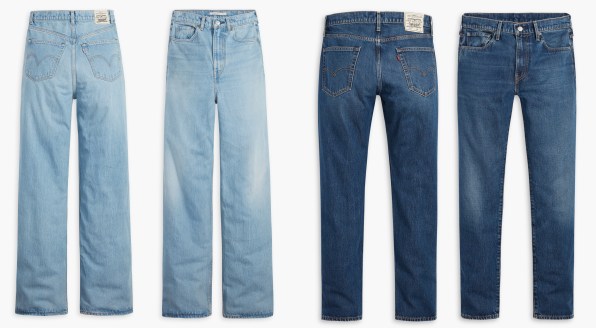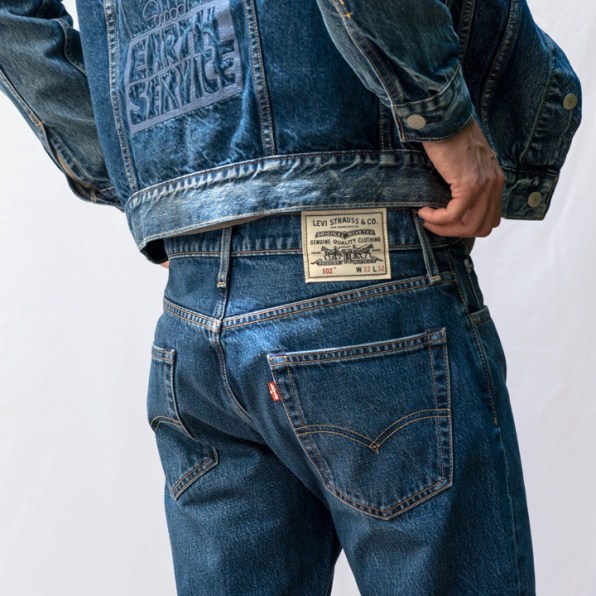When you wear the newest pair of Levi’s, you’ll also be wearing someone’s old Levis: they’re partially made from old, recycled jeans. They’re also fully circular: When they eventually wear out, they can be recycled again into new material for new jeans, using the same innovative technology, developed by a Swedish startup called Renewcell, that was used to produce them.
For the apparel brand, which has been working with the startup for more than two years, incorporating recycled fabric is key to improving sustainability. In a lifecycle analysis of its products, “the overwhelming impact is in the creation of the raw material itself,” says Paul Dillinger, vice president of global product innovation at Levi Strauss and Co. Growing the cotton to make a pair of jeans uses more than 2,500 liters of water, for example; over the lifetime of the jeans, that’s more water than consumers would use washing the clothing repeatedly. By using fabric made in part from recycled cotton, the water footprint—along with the carbon and chemical footprint—shrinks.



There’s no shortage of old clothing to make new material—Americans alone throw out some 26 billion pounds of textiles each year—and the amount that’s collected for recycling is likely to continue to grow. “As we look at new regulatory initiatives within the European Union that make it fundamentally illegal to landfill garments, the macroeconomics are now in favor of using discarded garments as a resource,” Dillinger says. “Because it is becoming expensive to try to landfill this stuff. There’s actually tremendous supply that is ready to be activated.”








 User Center
User Center My Training Class
My Training Class Feedback
Feedback












Comments
Something to say?
Log in or Sign up for free